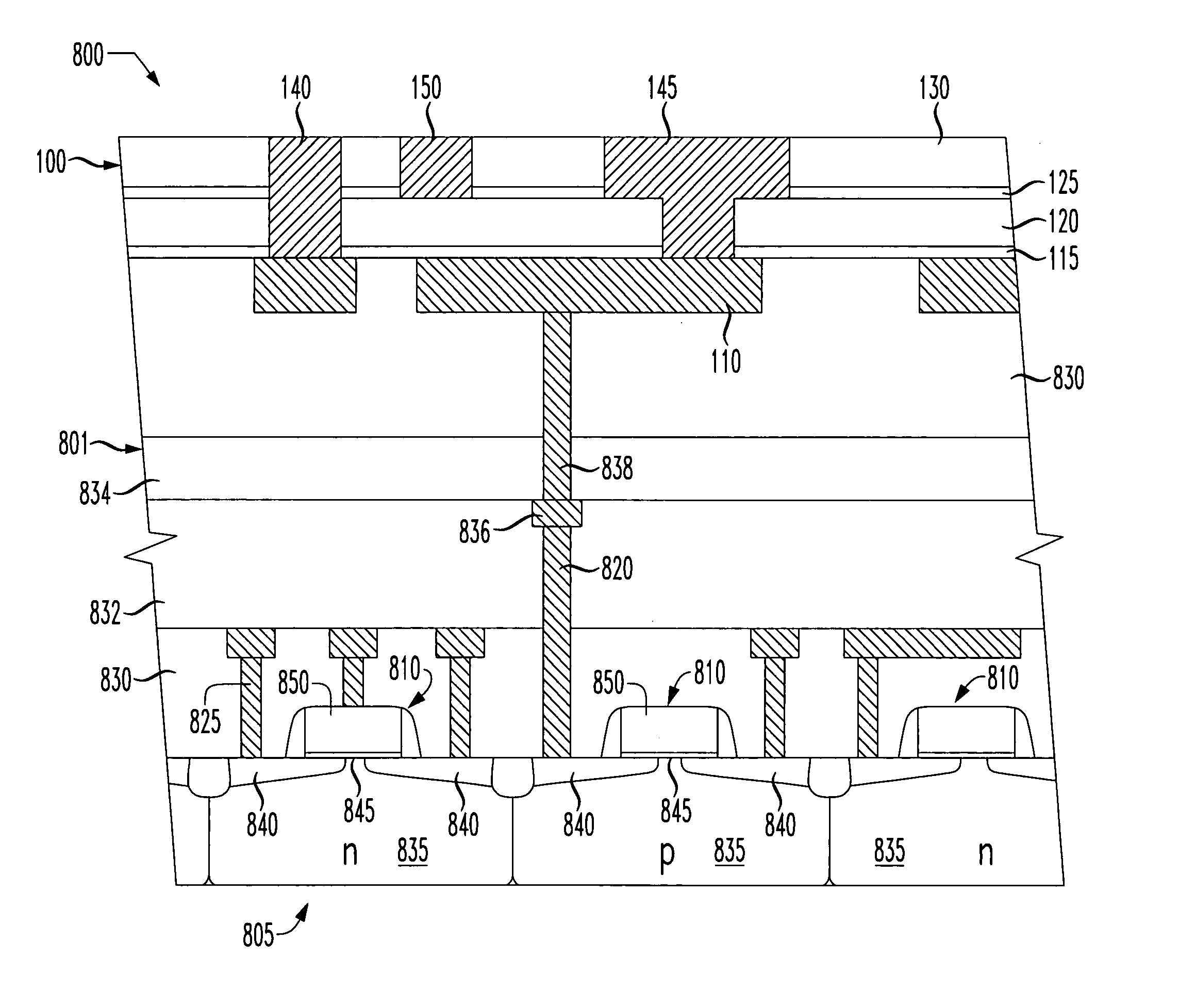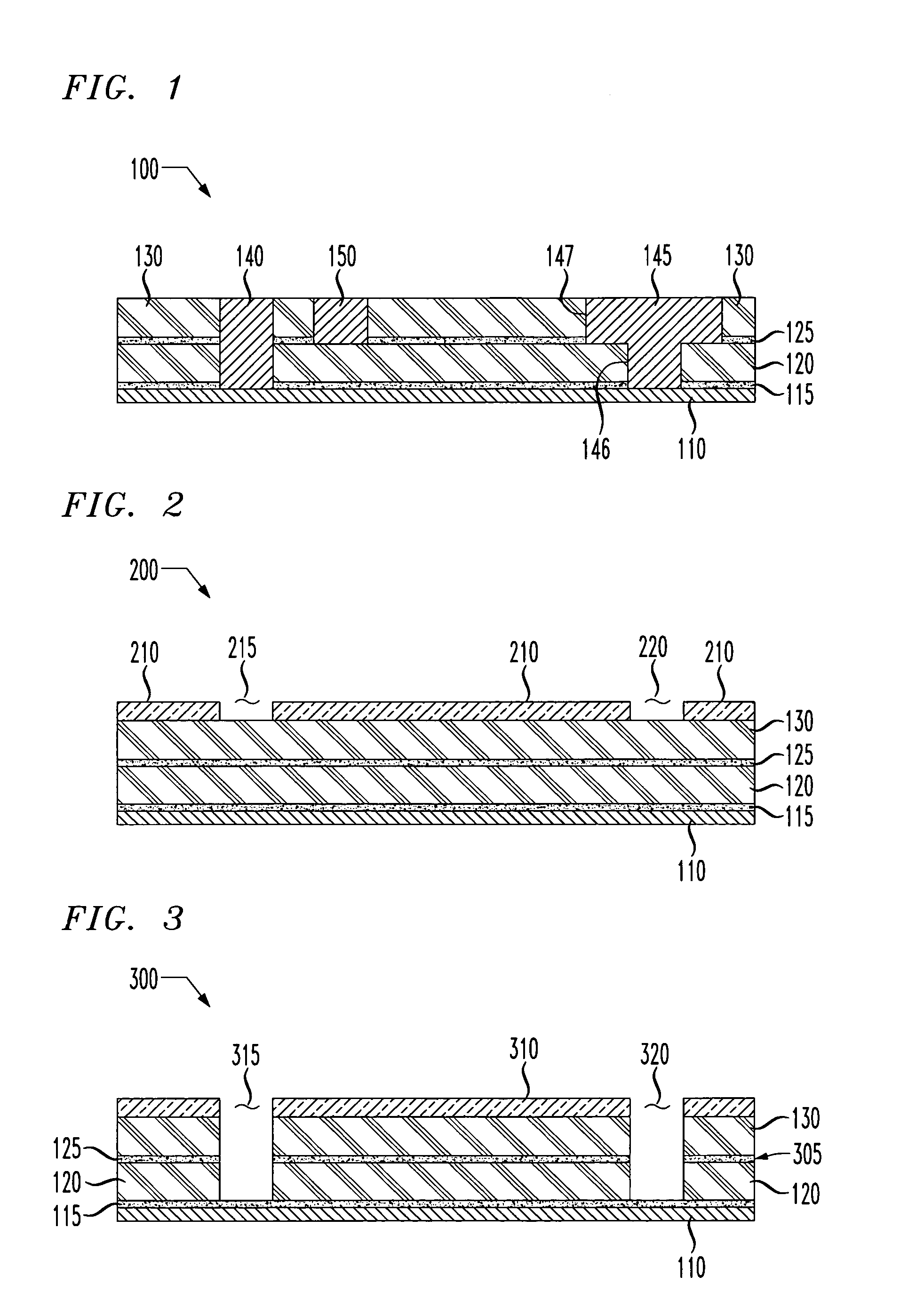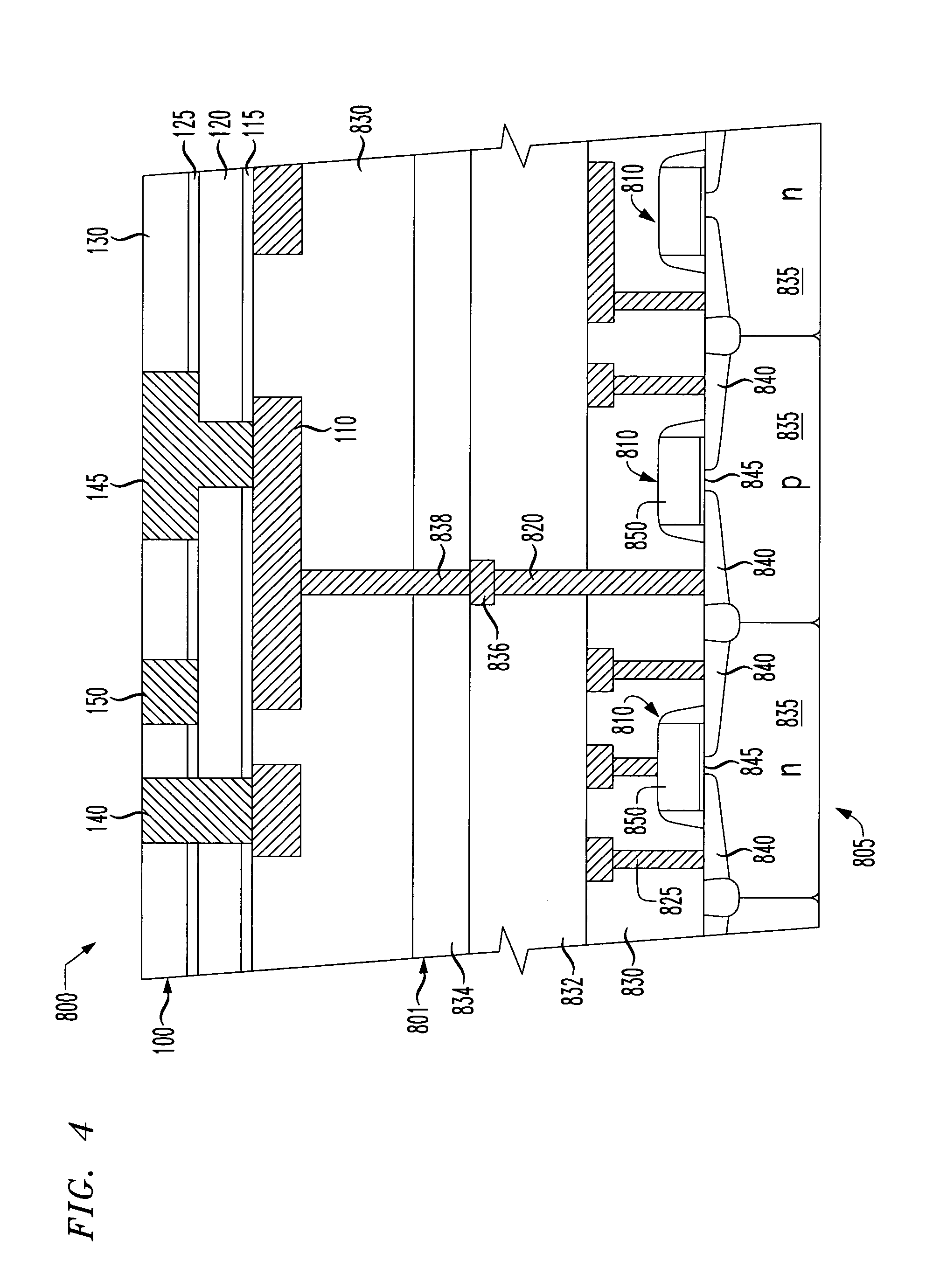Dual damascene process with no passing metal features
a damascene and metal feature technology, applied in the direction of semiconductor devices, semiconductor/solid-state device details, electrical apparatus, etc., can solve the problems of insufficient lateral expansion of the lateral expansion of the lateral expansion of the lateral expansion of the lateral expansion of the lateral expansion of the lateral expansion, and the difficulty in accurately positioning the via hole and the trench for the runners,
- Summary
- Abstract
- Description
- Claims
- Application Information
AI Technical Summary
Benefits of technology
Problems solved by technology
Method used
Image
Examples
Embodiment Construction
[0024]Referring initially to FIG. 1, illustrated is a partial sectional view of an exemplary embodiment of an interconnect structure 100 formed in accordance with the principals of the present invention. The interconnect structure 100 includes a first metal feature 110 located on a surface of a semiconductor device, first and second etch stop layers 115, 125, first and second dielectric layers 120, 130. The interconnect structure 100 also includes a first via 140 that has a first portion that extends from the conductive layer 110 to the second etch stop layer 125 and a second portion that extends from the second etch stop layer 125 through the second dielectric layer 130. It should be noted that the via 140 does not have a landing pad, which may also be known as a passing metal feature, associated with it. In many conventional devices the landing pad is a metal-filled trench that is located immediately over a via and serves as a connection point for an overlying via. In such convent...
PUM
 Login to View More
Login to View More Abstract
Description
Claims
Application Information
 Login to View More
Login to View More - R&D
- Intellectual Property
- Life Sciences
- Materials
- Tech Scout
- Unparalleled Data Quality
- Higher Quality Content
- 60% Fewer Hallucinations
Browse by: Latest US Patents, China's latest patents, Technical Efficacy Thesaurus, Application Domain, Technology Topic, Popular Technical Reports.
© 2025 PatSnap. All rights reserved.Legal|Privacy policy|Modern Slavery Act Transparency Statement|Sitemap|About US| Contact US: help@patsnap.com



